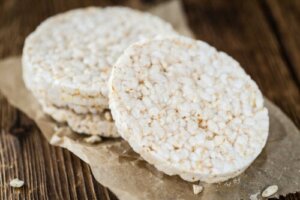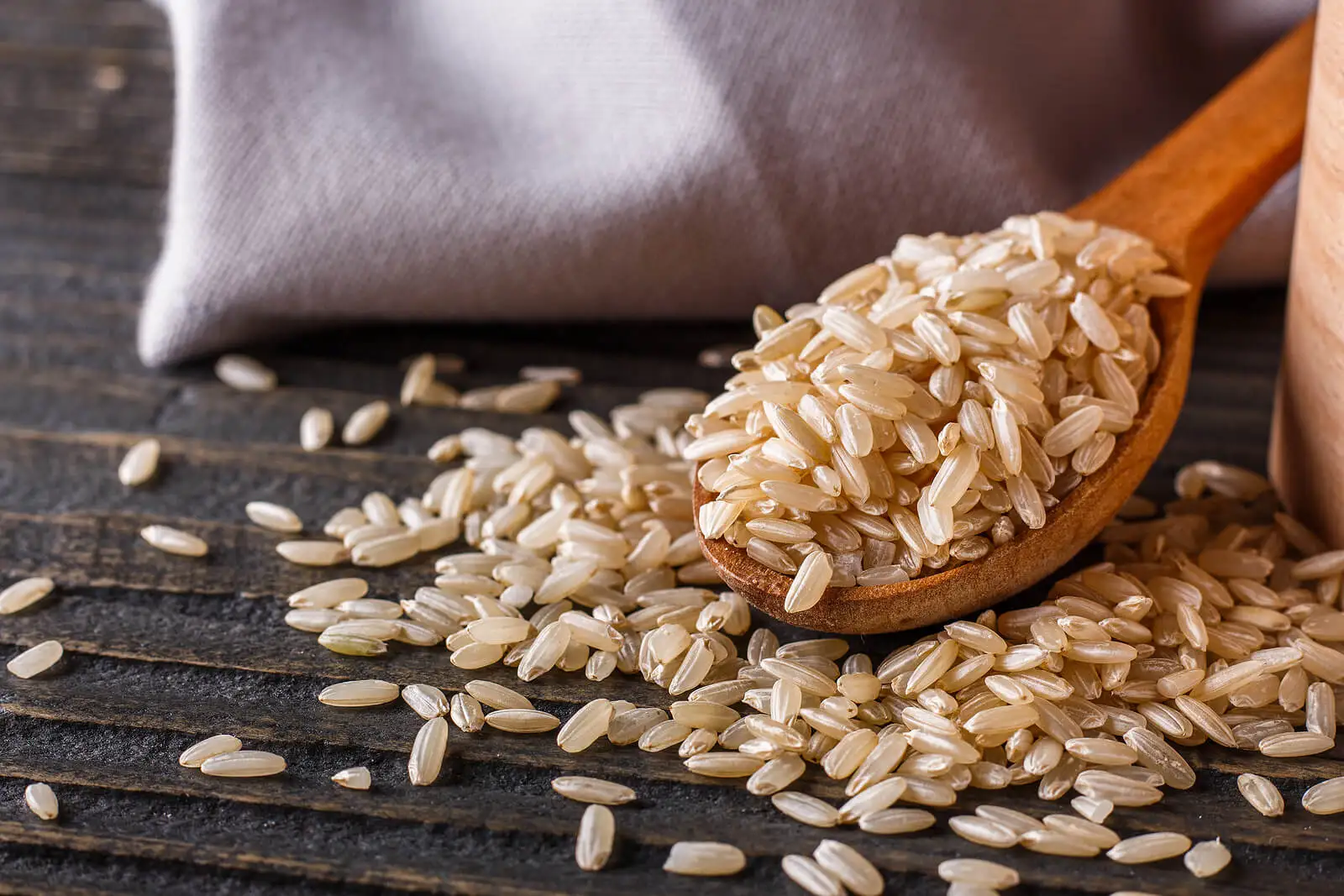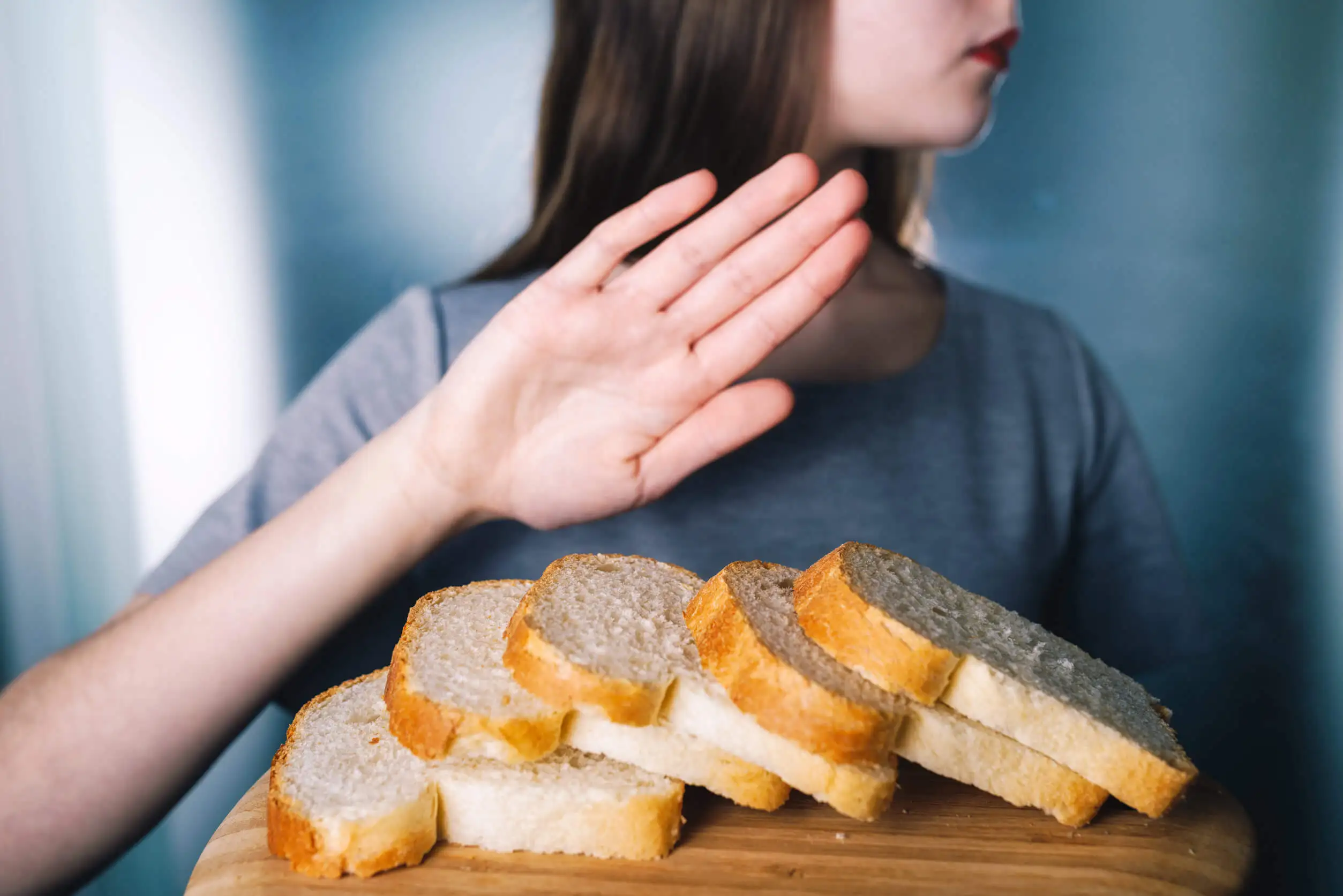Rice Cakes: The Benefits of this Snack


Written and verified by the nutritionist Maria Patricia Pinero Corredor
Speaking of snacks, some of the most popular are rice cakes. This popularity is supported not only by their taste and texture, but also by their potential benefits. Depending on the type of rice used and the rest of the ingredients, they can be low in calories, high in fiber, or designed to maintain a healthy weight.
However, if it’s a rice dessert, with so many carbohydrates, how can it be beneficial? In fact, a rice cake can be made with puffed brown rice, which is filled with air under pressure and this increases its volume. Thus, it decreases the contribution of carbohydrates and calories.
Keep reading to learn more about this delicious snack. You’ll be able to benefit from it without feeling any guilt!
What is rice cake?
Rice cakes are also sometimes known as rice crackers. It’s a product of vegetable origin that’s industrially produced and processed. However, there’s also a homemade version that involves selecting ingredients and opting for healthier recipes. It’s made with white rice or brown rice.
This is a snack that can be prepared both sweet and savory and its raw material is puffed rice. It has a round shape, and is light and crunchy.
This can be eaten as a snack or appetizer, alone or combined with other ingredients. In addition, it belongs to the starchy carbohydrate group, since this is the most abundant nutrient in this snack.
Also, thanks to its crunchy texture, it helps to calm anxiety levels. The fact of using puffed rice makes it have more volume than bread. The air expands the portions and the caloric intake is reduced. Thus, about 2 or 3 rice cakes are equivalent to a slice of bread.
The selection of brown rice as the main ingredient makes the cakes healthier and provides more fiber. Now let’s take a look at its nutritional properties.

We think you may also enjoy reading this article: Columbian Rice with Chicken: Healthy, Tasty and Economical
The nutritional characteristics of rice cakes
Nutritional information may vary, depending on the type of rice cake. It’s feasible to find different flavors and ingredients, such as cheddar cheese, caramel corn, apple cinnamon, and chocolate, among others.
To analyze the nutritional value of rice cakes, we’ll refer to the brown rice version. According to Food Data Central, the nutritional content of 2 units (18 grams) is as follows:
- Calories: 69.7 calories
- Carbohydrates: 14, 7 grams
- Sugar: 0.15 grams
- Protein: 1.48 grams
- Fat: 0.5 grams
- Fiber: 0.75 grams
- Magnesium: 23.6 milligrams
- Zinc: 0.54 milligrams
- Iron: 0.27 milligrams
- Niacin: 1.41 milligrams
- Manganese: 0.67 milligrams
- Folic acid: 3.78 micrograms
The main nutrient in rice cake is carbohydrates, represented by starch, which provides almost all of the energy in this snack. Many consider it unsuitable for calorie-restricted diets. However, 2 puffed rice cakes provide only 70 calories.
The fiber content is 0.75 grams, but can be enriched a little more if accompanied by vegetable-based toppings, such as tomatoes, eggplant, mushrooms, peppers, or cabbage.
The manganese value in rice cakes is 0.67 milligrams, which represents 29% of the daily intake for an average adult. This mineral is involved in collagen production, bone formation, and maintenance of immune function.
Niacin represents 10% of the recommended daily intake for adults. This vitamin, as well as others of the B complex, participate in the metabolism of carbohydrates to convert them into energy.
In the case of commercial snacks, it’s important to check the labels of each rice cake, since, according to the ingredients, the nutritional composition varies.
The benefits of rice cakes
We’re going to talk about the benefits of brown rice cakes since the fiber content and other compounds present in the bran of the grain enhance its effects on good health.
They’re easily digestible and gluten-free
Rice contains highly digestible carbohydrates and very few carbs that are poorly absorbed. It’s also gluten-free, making brown rice cakes a healthy choice for people with celiac disease or gluten intolerance.
Like this article? You may also like to read: Cholesterol-Friendly Rice with Vegetables and Chia Seeds
Rice cakes are a source of antioxidants
Brown rice contains phenolic acids, flavonoids, tocopherols, and selenium, which protect cells against oxidative damage from free radicals. According to a group of experts, brown rice contains many phytochemicals in the bran layer. This gives it not only an antioxidant effect, but also cardioprotective, anti-diabetic, and anti-obesity effects.
Rice cakes can be used for weight control
Brown rice cakes provide 70 calories in 2 units. This makes them good for weight reduction diets. If we compare them with brown bread, which provides 129 calories in 2 slices, they’re undoubtedly useful.
They can help regulate sugar levels
There’s enough evidence that positively relates the consumption of dietary fiber with the prevention and control of type 2 diabetes. The presence of fiber in rice cakes could regulate blood sugar levels in cases of diabetes. For this reason, it’s best to eat brown rice cakes.
Whole grains also maintain intestinal health by promoting the growth of beneficial and healthy bacteria. This is the case with lactobacilli and Bifidobacterium, which are considered probiotics.

How to make homemade puffed rice cakes
Now we’ll bring you a homemade recipe so you can make the best brown rice cakes and renew your kitchen with the healthiest preparations.
Ingredients
- 1 pinch of salt
- 3/4 cup of water
- 2 egg whites
- 70 grams of brown rice
- 3 dessert teaspoons of sesame seeds
Step by step
- First, wash the brown rice under running water.
- Cook for 35-40 minutes or until mushy.
- Cool to room temperature. Add the sesame seeds and then mix with a spoon.
- Then, beat the egg whites in a bowl.
- Make a batter with the rice mixed with the sesame seeds and dip it into the bowl of egg whites.
- Shape the cakes into rounds and flatten them.
- Cook them in one of these 3 ways: brown them in the pan with olive oil, and bake them in the oven or in the microwave. If you use the latter, add a little olive oil to prevent them from sticking and heat for 5 minutes on each side. To bake, place on a tray with waxed paper and bake in the oven for 5 minutes at 200 degrees Celsius.
Remember that you can make rice cakes with different flavors, just by adding different spices, such as oregano, turmeric, or curry. Thyme goes very well with brown rice cakes.
What to accompany them with
Rice cakes have a mild flavor, so they’re suitable to highlight salty and sweet flavors. Let’s look at some accompaniments to these delicious, crunchy cakes:
- Hummus topped with spinach, tomato, and cucumber
- Vegan pesto
- Mashed avocados with bell pepper and chili
- Almond, peanut, or sunflower seed butter or sprinkled with raspberry jam
- Melted dark chocolate topped with sliced figs
- Tofu or nut cheeses with basil and sliced tomatoes
- Coconut butter with chopped nuts and dark chocolate
Any other side dish, vegan or not, that your culinary creativity brings you will go well with these rich snacks. For example, a juicy mushroom or bell pepper dip will enhance the flavor.
Rice cakes in your diet
Rice cakes are versatile to prepare and accompany. The advantages of these snacks are not only from a culinary point of view.
When prepared with some special ingredients, such as brown rice, they provide several interesting health benefits. For this reason, it’s common to find them as part of Type 2 diabetes or weight loss meal plans.
All cited sources were thoroughly reviewed by our team to ensure their quality, reliability, currency, and validity. The bibliography of this article was considered reliable and of academic or scientific accuracy.
- National Institute of Health. NIH. Manganeso. Disponible en: https://ods.od.nih.gov/factsheets/Manganese-DatosEnEspanol/
- U.S. Departament of Agriculture. USDA. Snacks, rice cakes, brown rice, plain, unsalted. Disponible en: https://fdc.nal.usda.gov/fdc-app.html#/food-details/170250/nutrients
- National Institute of Health. NIH. Niacina. Disponible en: https://ods.od.nih.gov/factsheets/Niacin-DatosEnEspanol/
- El arroz : alimento de millones / María Pinciroli ; Nora Raquel Ponzio ; Maité Salsamendi ; compilado por María Pinciroli y Nora Raquel Ponzio. – 1a ed. – Tandil: Universidad Nacional del Centro de la Provincia de Buenos Aires, 2015. E-Book. Disponible en: http://www.faa.unicen.edu.ar/archivos/Arroz_Alimento_de_millones.pdf
- Ravichanthiran, K., Ma, Z. F., Zhang, H., Cao, Y., Wang, C. W., Muhammad, S., Aglago, E. K., Zhang, Y., Jin, Y., & Pan, B. (2018). Phytochemical Profile of Brown Rice and Its Nutrigenomic Implications. Antioxidants (Basel, Switzerland), 7(6), 71. https://doi.org/10.3390/antiox7060071
- Fundación Española de Nutrición. FEN. Pan integral. Disponible en: https://fen.org.es/MercadoAlimentosFEN/pdfs/panintegral.pdf
- Åberg, S., Mann, J., Neumann, S., Ross, A. B., & Reynolds, A. N. (2020). Whole-Grain Processing and Glycemic Control in Type 2 Diabetes: A Randomized Crossover Trial. Diabetes care, 43(8), 1717–1723. https://doi.org/10.2337/dc20-0263
This text is provided for informational purposes only and does not replace consultation with a professional. If in doubt, consult your specialist.








